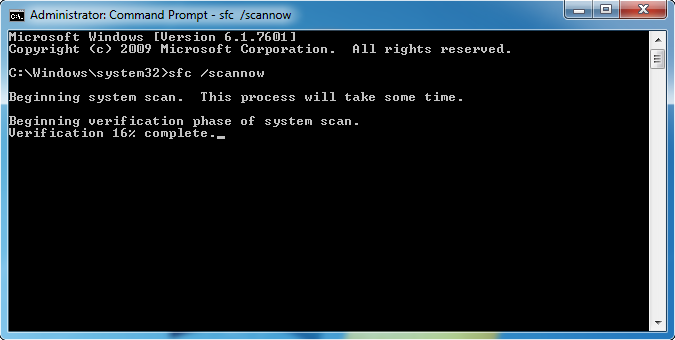Windows Cannot Find C:\Windows\regedit.exe
By Timothy Tibbettson 07/13/2023 |
If you receive an error on Windows startup or when trying to run the Registry Editor that says Windows cannot find C:\Windows\regedit.exe, here are the steps you can take to resolve this error.
1: Run a Malware Scan
One of the many problems that can come from malware is a missing regedit. We'd recommend you boot into safe mode and scan with Windows Defender or Malwarebytes.
Run System File Checker (SFC)
Microsoft System File Checker is a useful, built-in utility that can scan for and restore corrupted files in Windows. It is often used and recommended by techs and advanced users, however, it's relatively simple to use. Here's all you need to know to use System File Checker or Sfc /Scannow in text and video format.
Windows 10, Windows 8.1, or Windows 8 users will need to first run the Deployment Image Servicing and Management (DISM) tool before running the System File Checker. DISM will use Windows Update to provide any files that are needed to fix corruption. If you skip this step, System File Checker might not work. Windows 7 and Vista users can skip this step.
You will need to first open the Command Prompt or PowerShell as administrator.
Type in DISM.exe /Online /Cleanup-image /Restorehealth and press enter. This may take a few minutes.
2: Running System File Checker
All you need to do is type in sfc /scannow and press the Enter key.

System File Checker will now scan for and replace files from the Windows cache, typically located at C:\Windows\System32\dllcache.
A reboot will be required, and you're done.
3: System Restore or Reset This PC
If all else failed, you might need to Reset your PC. For more on that, see How to Reinstall Windows 10 Without Losing Your Files.
System Restore might be able to roll you back to not only when Regedit disappeared, but before any malware happened.
Similar:
How to Back up or Restore the Windows Registry
How to Automatically Back up the Registry on Windows 10
5 Ways to Open Registry Editor in Windows
How to Disable the Registry Editor (Regedit) in Windows
comments powered by Disqus
1: Run a Malware Scan
One of the many problems that can come from malware is a missing regedit. We'd recommend you boot into safe mode and scan with Windows Defender or Malwarebytes.
Run System File Checker (SFC)
Microsoft System File Checker is a useful, built-in utility that can scan for and restore corrupted files in Windows. It is often used and recommended by techs and advanced users, however, it's relatively simple to use. Here's all you need to know to use System File Checker or Sfc /Scannow in text and video format.
Windows 10, Windows 8.1, or Windows 8 users will need to first run the Deployment Image Servicing and Management (DISM) tool before running the System File Checker. DISM will use Windows Update to provide any files that are needed to fix corruption. If you skip this step, System File Checker might not work. Windows 7 and Vista users can skip this step.
You will need to first open the Command Prompt or PowerShell as administrator.
Type in DISM.exe /Online /Cleanup-image /Restorehealth and press enter. This may take a few minutes.
2: Running System File Checker
All you need to do is type in sfc /scannow and press the Enter key.

System File Checker will now scan for and replace files from the Windows cache, typically located at C:\Windows\System32\dllcache.
A reboot will be required, and you're done.
3: System Restore or Reset This PC
If all else failed, you might need to Reset your PC. For more on that, see How to Reinstall Windows 10 Without Losing Your Files.
System Restore might be able to roll you back to not only when Regedit disappeared, but before any malware happened.
Similar:
comments powered by Disqus






